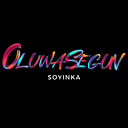Even if you don’t drink it, you can’t have failed to notice the prevalence of Coca-Cola around the world. With an annual revenue of $46 billion, it is one of the most profitable drinks companies in history. However, how did it achieve such success? This article takes a brief look at the history and rise of coca cola. Coca-Cola was invented by John Pemberton in 1886 as a patent medicine with purported medicinal properties (although this has been disputed). The name comes from the main ingredients: coca leaves (the source of cocaine) and kola nuts (which are caffeine rich). Coca-Cola began as a local drink; first sold as a syrup for soda fountains before being bottled as a standalone product. It became so popular that there were more than 500 independent manufacturers by 1919. However, this led to some Coca-Cola drinkers experiencing ‘adulteration fever’, leading to many manufacturers ceasing production due to public pressure. This left only two large producers: The Coca-Cola Company and Pepsi Cola Company. This article will explore these points and more; read on to discover more about this famous drink…
1887: Coca-Cola is sold to chemist, Asa Griggs
Asa Griggs purchased the right to manufacture the syrup in 1887. The business was hugely successful, with their only competition coming from the Pemberton Chemical Company; the original manufacturers of the syrup. With the syrup being so popular, many soda fountains offered customers a bottle to take home as well. This led to a shift in demand from soda fountains to homes, with a huge rise in sales. Asa Griggs saw the potential for bottled Coca-Cola, and began to focus his attention there.
1919: The ‘Adulteration Fever’ hits the US
The ‘adulteration fever’ was a public health scare that resulted in many companies being forced to shut down due to their products being ‘adulterated’ (i.e. containing non-identifiable ingredients). This affected many soda fountains, as they added ingredients to their drinks that weren’t always clear. This led to many customers demanding ‘pure’ coca cola, which resulted in fewer independent companies being able to meet the demand, and increased sales for the Coca-Cola Company.
1933: Coca-Cola becomes a registered trademark
The Coca-Cola Company was sued for copyright infringement by the owners of Kola, another drink that contained kola nuts. The judge ruled that Coca-Cola had been wrongly using ‘Kola’, but that there was no evidence of wrong-doing regarding ‘Cola’. The Coca-Cola Company appealed, resulting in the trademark being awarded to them in 1933. This meant that they could use ‘coca cola’ in all advertising, and that no one else was allowed to use the name.
1945: Overseas expansion begins
In 1945, Coca-Cola began to expand overseas with the purchase of a bottling company in Havana, Cuba. Their first bottling plant was built in Mexico City in 1950, and by 1955 they had expanded across Latin America, Europe and Asia. This was clearly a successful strategy, as Coca-Cola was sold in every country on the planet by 1963.
1955: The iconic bottle gets an overhaul
The Coca-Cola bottle that we are familiar with today was designed by the Root Glass Company of Indiana. The design was patented in 1955, but the new design didn’t appear in shops until 1959. The iconic design has barely changed since then, being the same shape, size and colour to this day.
1971: Advertising the product with great success
The Coca-Cola Company had been very reluctant to advertise their product until 1971, when they decided to break their silence. They used the ‘Coca-Cola Commercial’, which featured people of all ages and races, enjoying a drink together. It was the first time the company had used people in their advertisements. The commercial was so successful that it was shown in cinemas, and many people remember the song (‘I’d like to buy the world a coke’). Coca-Cola also began to sponsor sporting events: they set up the ‘Coca-Cola fund’ in 1951, which was used to award grants to universities.
1996: Offering consumers a wider range of choices
Coca-Cola was the company behind the launch of Diet Pepsi in 1964. They also began selling caffeine-free Coke in 1982, and Diet Coke in 1983. However, their most significant change came in 1985 when they launched ‘New Coke’. This was a reformulated version of the drink that was intended to give it a fresher, sweeter taste. However, consumers hated the new drink, and it was withdrawn only 77 days later.
2000 onwards: New challenges and opportunities for coca cola?
Coca-Cola has faced some challenges in recent years: they were sued in 1994 for the health risks associated with excessive consumption of sugar, and were accused of misleading investors about the amount of money they were spending on advertising. However, these events haven’t caused too much damage to the company. Their biggest challenge might be coming from ‘Health Sodas’, such as Pepsi Max and Diet Sobe. These are growing in popularity, and pose a real threat to Coca-Cola. Another challenge comes from the fact that people are consuming less soda, and more ‘energy drinks’ such as Red Bull, Monster and Rock Star.
Conclusion
Coca-Cola is one of the most popular soft drinks in the world. While it is known for its use of coca leaves and caffeine, it is now produced with no cocaine content. Its branding and marketing is also one of the most recognizable in the world, with the iconic logo and red and white colour scheme being instantly recognisable. Coca-Cola has survived changing tastes, and a variety of challenges over the years. It will be interesting to see what the future holds for this famous drink, and if it can continue its success.
